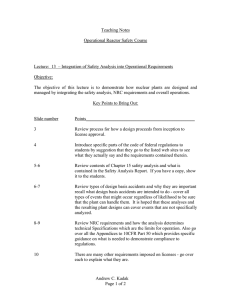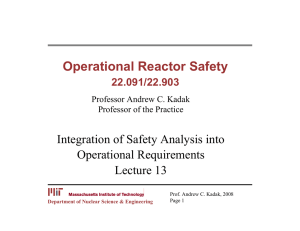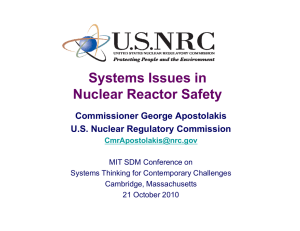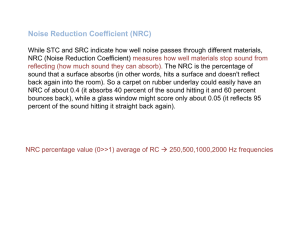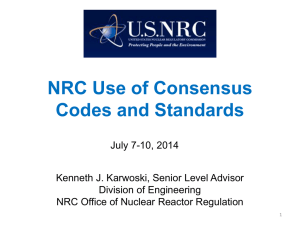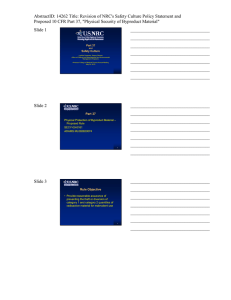Teaching Notes Operational Reactor Safety Course
advertisement
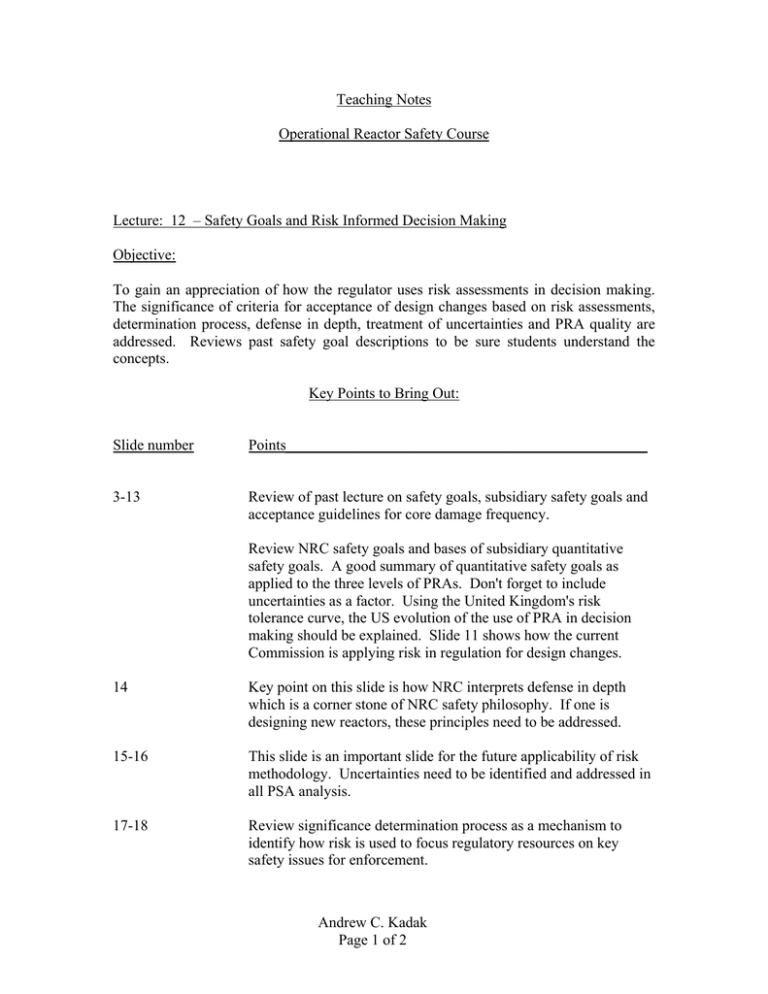
Teaching Notes Operational Reactor Safety Course Lecture: 12 – Safety Goals and Risk Informed Decision Making Objective: To gain an appreciation of how the regulator uses risk assessments in decision making. The significance of criteria for acceptance of design changes based on risk assessments, determination process, defense in depth, treatment of uncertainties and PRA quality are addressed. Reviews past safety goal descriptions to be sure students understand the concepts. Key Points to Bring Out: Slide number Points________________________________________________ 3-13 Review of past lecture on safety goals, subsidiary safety goals and acceptance guidelines for core damage frequency. Review NRC safety goals and bases of subsidiary quantitative safety goals. A good summary of quantitative safety goals as applied to the three levels of PRAs. Don't forget to include uncertainties as a factor. Using the United Kingdom's risk tolerance curve, the US evolution of the use of PRA in decision making should be explained. Slide 11 shows how the current Commission is applying risk in regulation for design changes. 14 Key point on this slide is how NRC interprets defense in depth which is a corner stone of NRC safety philosophy. If one is designing new reactors, these principles need to be addressed. 15-16 This slide is an important slide for the future applicability of risk methodology. Uncertainties need to be identified and addressed in all PSA analysis. 17-18 Review significance determination process as a mechanism to identify how risk is used to focus regulatory resources on key safety issues for enforcement. Andrew C. Kadak Page 1 of 2 19 A key area for the future of PSAs is to standardize PSA quality. NRC has commissioned several standards by ASME and ANS to develop approaches for achieving quality such that there is confidence in the results in the use of PSA. 20 A good summary slide of NRC's approach to a risk informed regulatory system. 21 This safety monitor slide should introduce how utilities are using risk metrics in operations. Go over what the key indicators are including CDF and LERF as well as the safety targets. Explain utilities use of risk in maintenance and outage planning. Andrew C. Kadak Page 2 of 2 MIT OpenCourseWare http://ocw.mit.edu 22.091 / 22.903 Nuclear Reactor Safety Spring 2008 For information about citing these materials or our Terms of Use, visit: http://ocw.mit.edu/terms.
